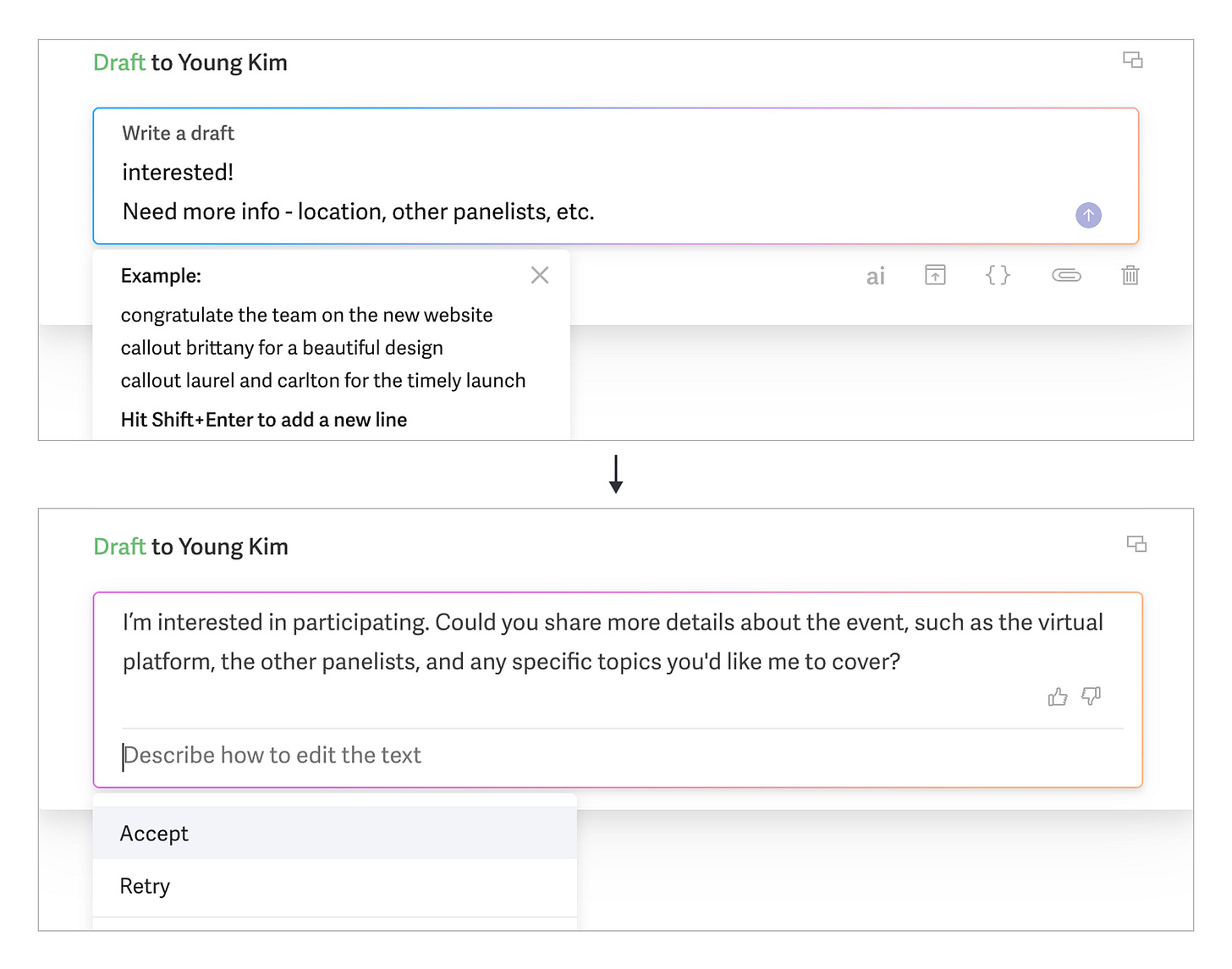Inbox Overload Meets AI
How AI is rewriting email UX
📩 Email isn’t the problem, but the endless volume is
For knowledge workers, the email inbox is a mix of high-stakes communication and digital clutter.
An average professional spends around 11 hours a week sorting, replying to, and searching through emails.
How AI reinvents the core email journey
From incoming chaos to clear communication, email clients, like Notion Mail, Superhuman, and Gmail are tackling overload by embedding AI throughout the user journey.
Here's how AI can address key pain points at each step
Managing incoming messages
The pain point: Inboxes are one-size-fits-all, making it hard to prioritize what matters across work and life. Sorting emails, or even deciding what to ignore, is a time-intensive process.
Goal: Clarity over chaos
Notion Mail
✅ Key UX approach
Auto-label by context, not just sender:
Learns how the user organize emails (e.g., ‘recruiting’) and auto-applies that logic to similar threads and incoming emails
Clarify user’s intent:
Suggests matching emails for the user to confirm or correct before labels are applied
Communicating out
The pain point: Writing replies takes too long — especially when it feels overwhelming but still needs to sound personal
Goal: Inbox Zero
Superhuman
✅ Key UX approach
Minimize overload to initiate replies:
AI initiates the full draft, the user simply reviews and confirms
Transforms the user’s rough bullet points into a conversational email
Match user’s writing style:
Suggests drafts based on the voice and tone in the emails the user have already sent
Finding & retrieving
The pain point: Finding information from an old email or long threads can feel like digging through an endless digital junk drawer
Goal: Get the right answer effortlessly
Gmail
✅ Key AI UX approach
Answer-first search: find answers, not emails
Lets the user ask direct and conversational questions like “When is my flight?”
Answers concisely, quoting sources below
From quick scan to full context summaries
Provides skimmable bullet-point summaries
By suggesting "Show me a longer summary" as a next step, they bridges quick skimming and in-depth reading
Real world limitation 🚧
Trust gaps: For sensitive and critical emails, users still hesitate to fully trust AI automation
Edge cases: Complex workflows in fields like law or finance can break simple AI processes
Early days: Personalization is improving, but still has a long way to go
Key UX takeaways from AI adoption in email
✅ AI-first, user-final flow: AI starts the task, but users always finish — keeping control while moving faster
✅ Mental model alignment: Organize emails by context to match how users naturally think
✅ At-a-glance clarity: Use summaries and highlights to make content easier to scan and act on
✅ Information over retrieval: Users aren’t looking for an email, they want the answer inside it
One more layer that great products nail beyond solving tasks:
The attitude their AI takes toward users
Different AI attitudes shape UX differently
AI attitude = behavior style
It’s how your product chooses to help: push ahead, adapt, or quietly support
As AI in products becomes more advanced, matching the right AI attitude to specific context becomes key to great UX
💡
When do users need your AI to lead, and when do they need it to follow?

















Love the case studies!
Did WhatsApp have such a feature to organize the mess and sum up conversations with hundreds of participants?